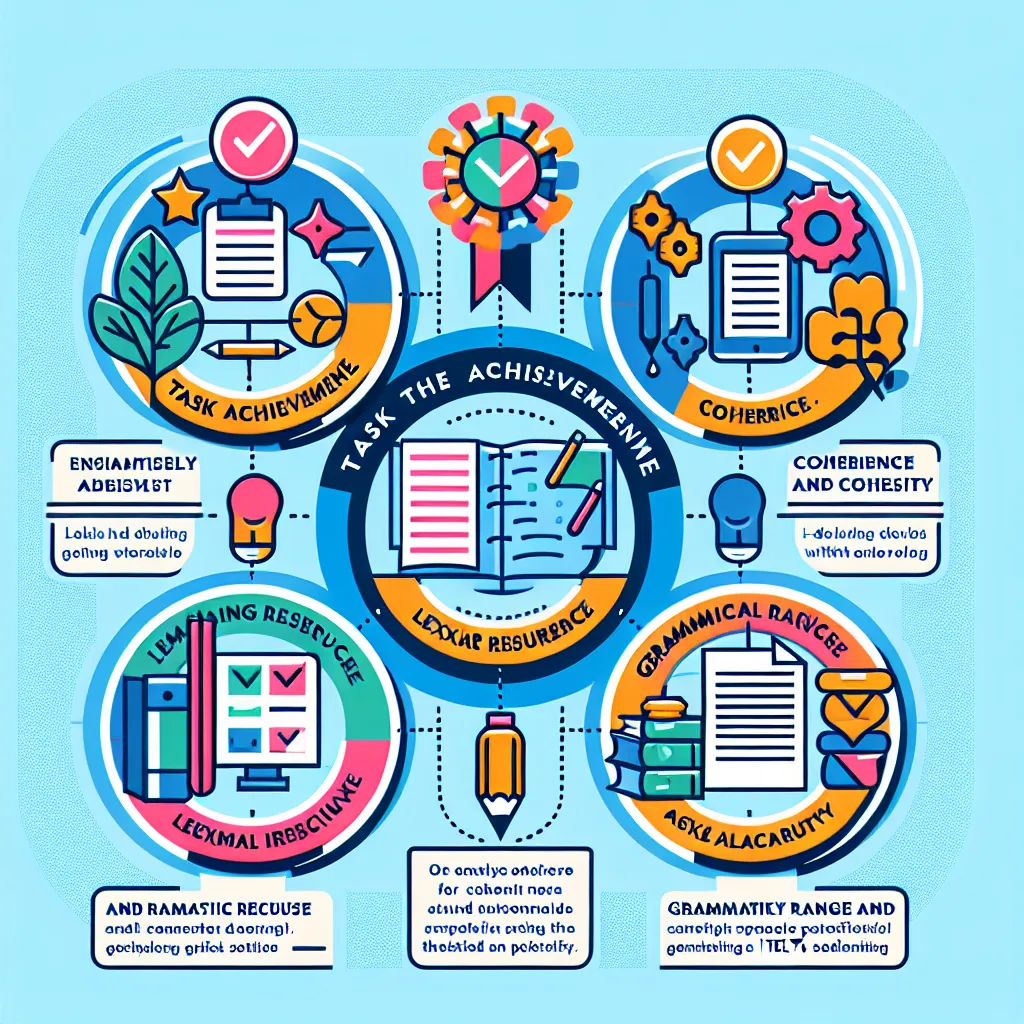Are you preparing for the IELTS exam and wondering about the scoring criteria for Writing Task 1? Understanding how your writing is evaluated is crucial for achieving your desired band score. In this comprehensive guide, we’ll delve into the intricacies of IELTS Writing Task 1 scoring, providing you with valuable insights to improve your performance.
Understanding IELTS Writing Task 1 Scoring
IELTS Writing Task 1 is a critical component of the academic IELTS test. It requires candidates to describe, summarize, or explain visual information presented in the form of graphs, charts, tables, or diagrams. The scoring process for this task is based on four key criteria, each contributing equally to your overall band score.
 IELTS Writing Task 1 Scoring Criteria
IELTS Writing Task 1 Scoring Criteria
1. Task Achievement
Task Achievement assesses how well you have addressed all parts of the task and presented a clear overview of the main trends or features. To score well in this criterion:
- Identify and report the main features of the visual information
- Make relevant comparisons where appropriate
- Support your descriptions with accurate data from the visual
- Provide a clear overview of the main trends or patterns
Remember, your response should be at least 150 words long to avoid losing marks unnecessarily.
2. Coherence and Cohesion
This criterion evaluates the overall clarity and fluency of your writing. To excel in Coherence and Cohesion:
- Organize your ideas logically
- Use paragraphs effectively to structure your response
- Employ a range of cohesive devices (e.g., linking words and phrases) appropriately
- Ensure your writing flows smoothly from one idea to the next
A well-structured response will guide the reader through your description effortlessly.
3. Lexical Resource
Lexical Resource refers to your vocabulary usage. To score highly in this area:
- Use a wide range of vocabulary accurately and appropriately
- Demonstrate the ability to use less common words and phrases
- Avoid repetition by using synonyms and paraphrasing
- Show awareness of collocation (words that naturally go together)
Remember, it’s not just about using complex words, but using them correctly and in context.
4. Grammatical Range and Accuracy
This criterion assesses your ability to use a variety of grammatical structures accurately. To improve your score:
- Use a mix of simple and complex sentence structures
- Demonstrate control over different tenses and sentence types
- Minimize grammatical errors, especially those that hinder communication
- Pay attention to subject-verb agreement, article usage, and word order
Accuracy is crucial, but don’t be afraid to attempt more complex structures as well.
How Examiners Apply the Scoring Criteria
IELTS examiners are trained to use detailed band descriptors for each criterion. They assign a band score from 0 to 9 for each of the four criteria, then calculate the average to determine your overall Writing Task 1 score.
Common Pitfalls to Avoid
- Insufficient word count: Writing less than 150 words can negatively impact your Task Achievement score.
- Irrelevant information: Including personal opinions or information not present in the visual can lower your Task Achievement score.
- Poor organization: Lack of a clear structure or logical progression can affect your Coherence and Cohesion score.
- Limited vocabulary: Overreliance on basic or repetitive vocabulary can limit your Lexical Resource score.
- Grammatical errors: Frequent mistakes, especially those that impede understanding, will lower your Grammatical Range and Accuracy score.
Strategies for Improving Your Score
To enhance your performance in IELTS Writing Task 1:
- Practice regularly: Familiarize yourself with various types of visuals and practice describing them within the time limit.
- Study model answers: Analyze high-scoring responses to understand what examiners are looking for.
- Expand your vocabulary: Learn and practice using academic vocabulary relevant to describing trends and data.
- Master linking words: Improve your use of cohesive devices to enhance the flow of your writing.
- Revise grammar: Focus on accuracy while also incorporating a range of grammatical structures.
 IELTS Writing Task 1 Practice
IELTS Writing Task 1 Practice
Next Steps in Your IELTS Preparation
Now that you understand how IELTS Writing Task 1 is scored, it’s time to put this knowledge into practice:
- Take timed practice tests: Simulate exam conditions to improve your time management skills.
- Seek feedback: Have your practice essays reviewed by a teacher or experienced IELTS tutor.
- Create a study plan: Focus on improving each scoring criterion systematically.
- Review official IELTS materials: Familiarize yourself with the types of visuals and tasks you might encounter.
Remember, consistent practice and targeted improvement in each scoring area will help you achieve your desired band score in IELTS Writing Task 1.
Understanding the scoring criteria for IELTS Writing Task 1 is a crucial step in your exam preparation. By focusing on Task Achievement, Coherence and Cohesion, Lexical Resource, and Grammatical Range and Accuracy, you can strategically improve your writing skills and boost your confidence for test day. Keep practicing, stay focused, and approach your IELTS preparation with a clear understanding of what examiners are looking for. Good luck with your IELTS journey!




